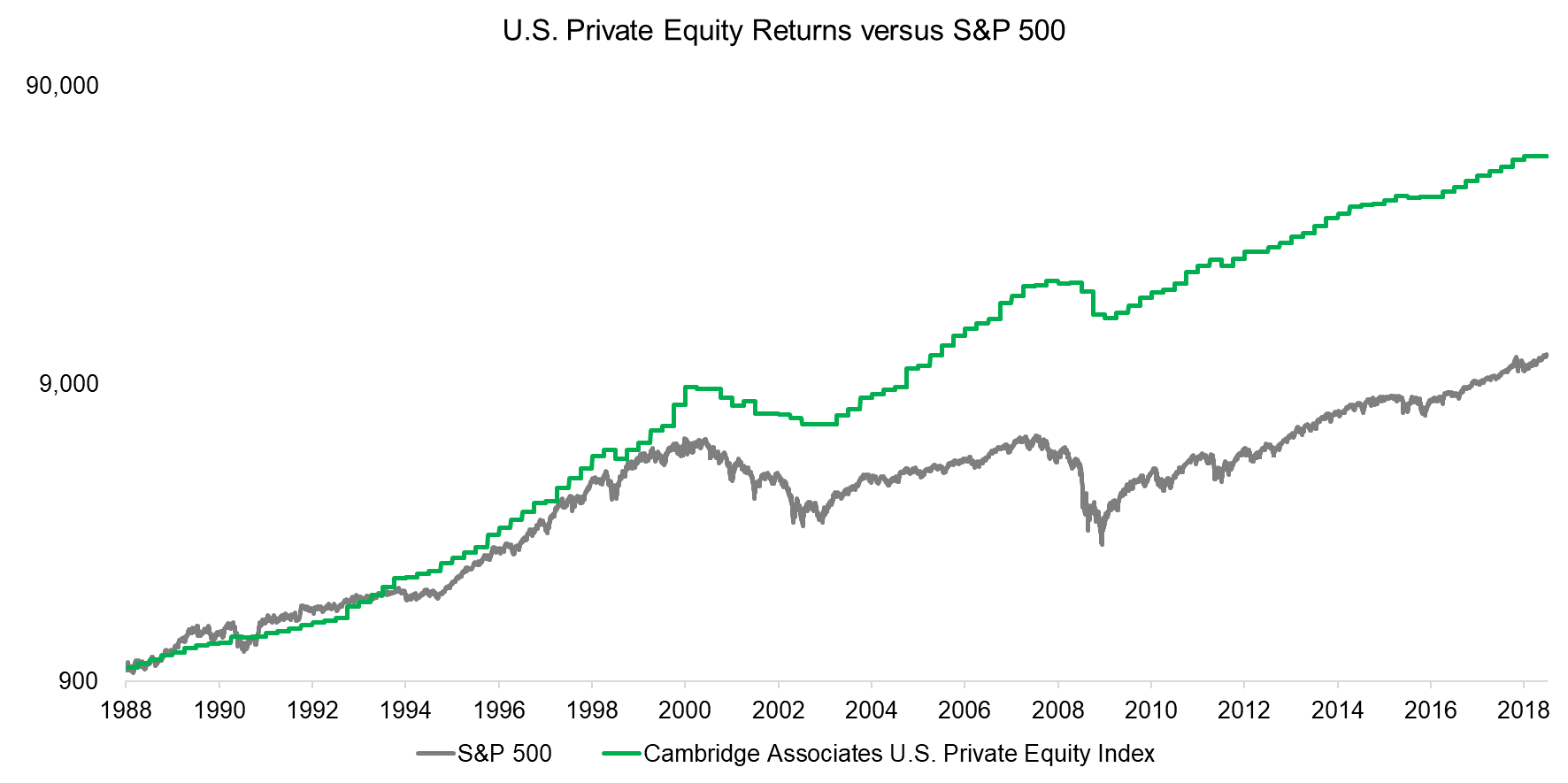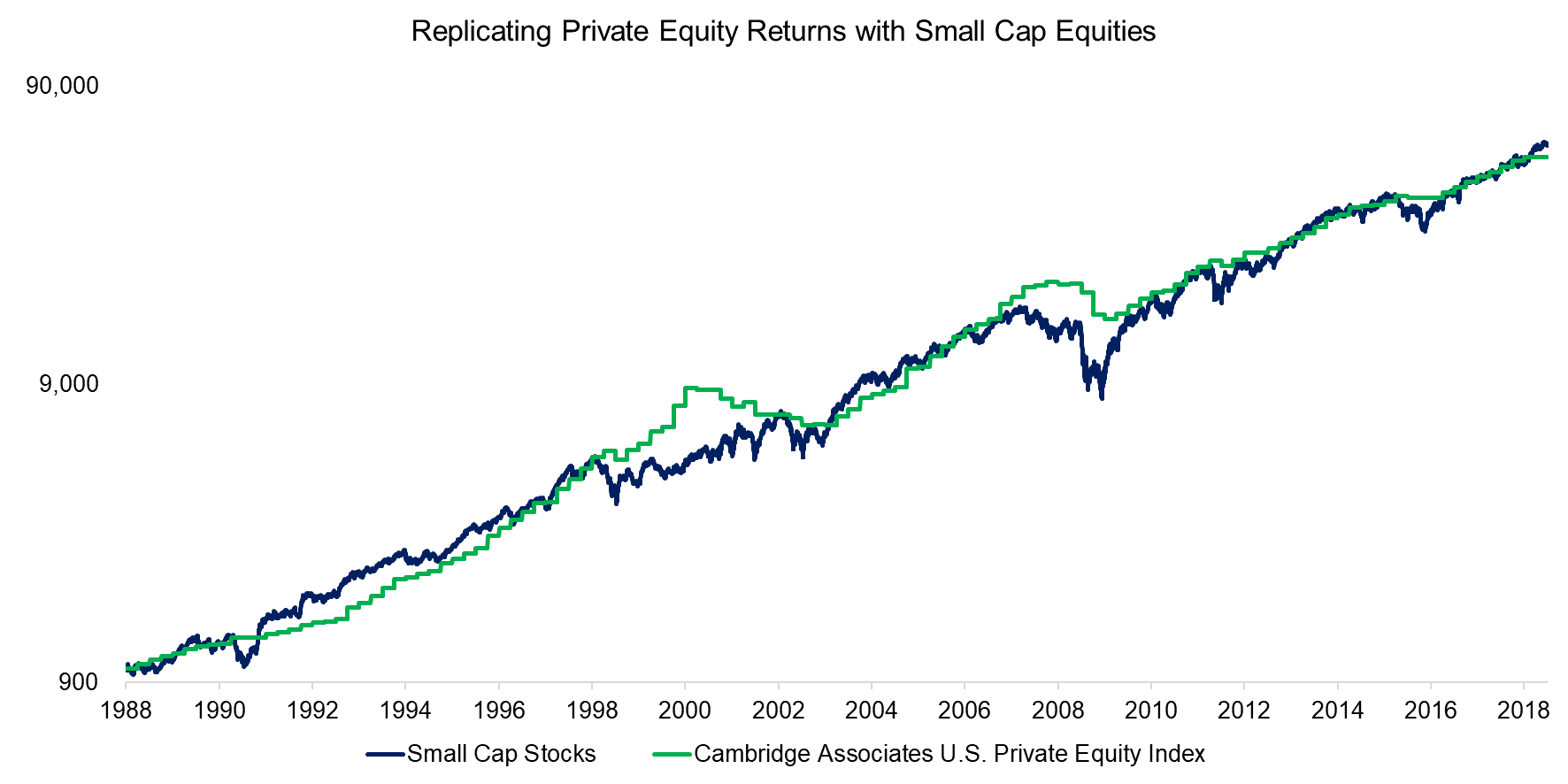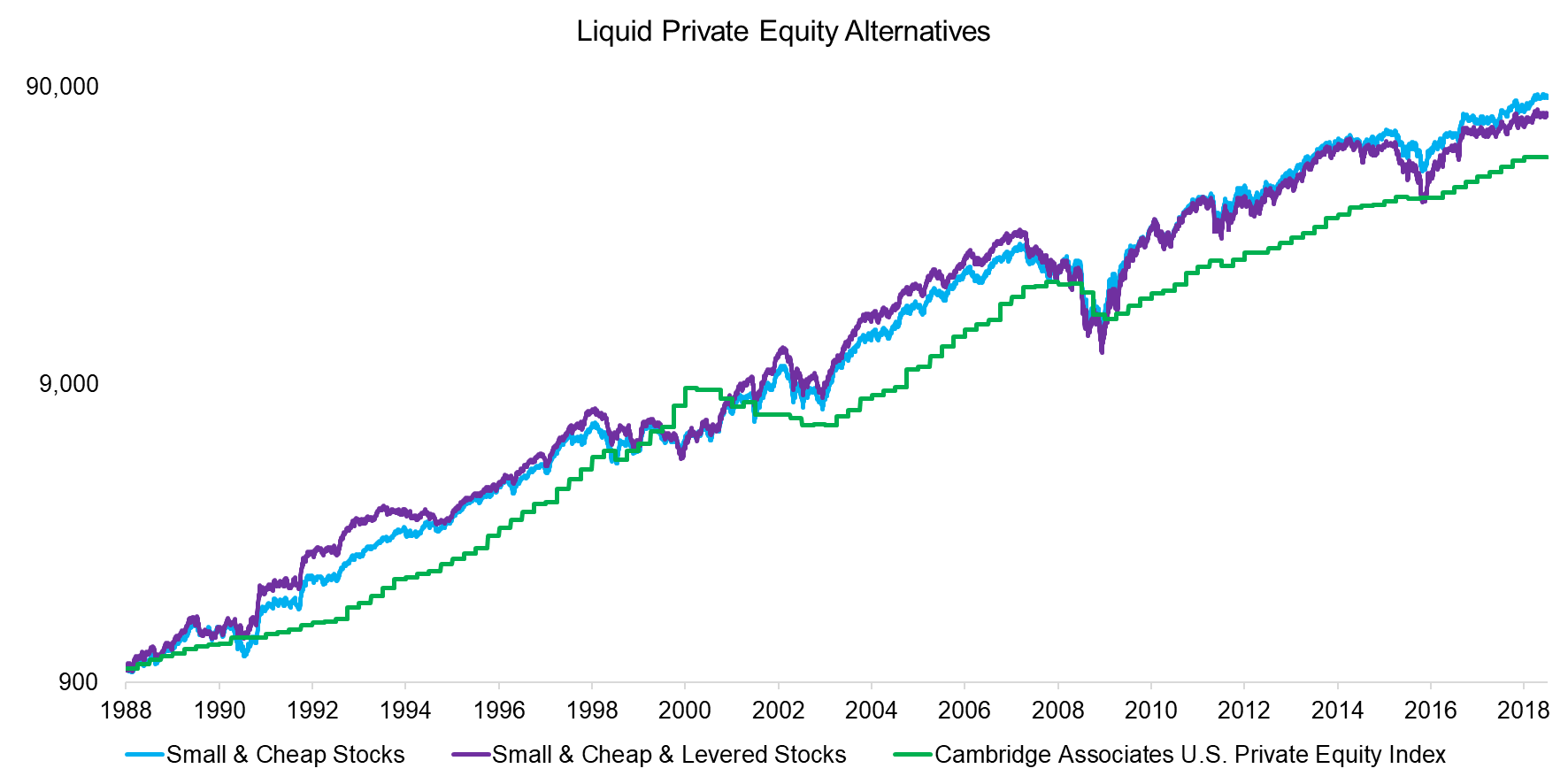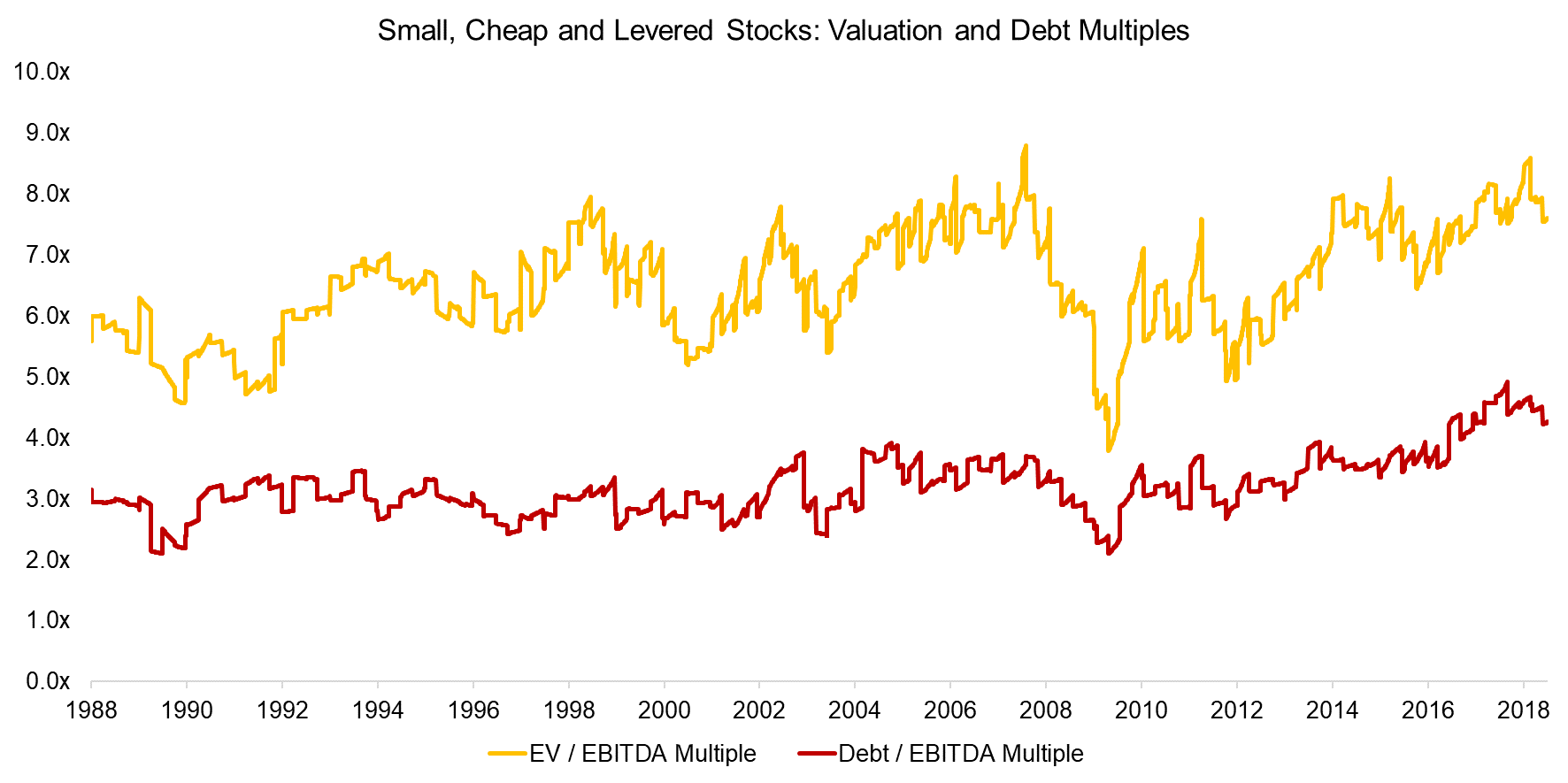Private Equity: The Emperor has No Clothes
Replicating Private Equity with Public Equities
December 2018. Reading Time: 10 Minutes. Author: Nicolas Rabener.
SUMMARY
- Private equity returns can be replicated with small cap equities
- Small, cheap and levered stocks would have achieved higher returns since 1988
- Valuation and debt multiples are at all-time-highs, lowering expected returns
FROM BUST TO BOOM
The private equity industry had an abysmal outlook in 2008 and many portfolio companies were at the brink of collapse. Carlyle Capital, a listed affiliate of the US buyout giant The Carlyle Group, defaulted on its debt.
Fast-forward to 2018 and such global financial crisis–related difficulties seem almost forgotten and private equity is flourishing. Indeed, alternative investment firms have $1.8 trillion in “dry powder” waiting in reserve and more than half of that is held by private equity funds.
The fondness for private equity among institutional investors is easy to explain: It comes down to high returns, low volatility, and a lack of correlation to traditional asset classes. Of course, such attributes also evoke some skepticism: Don’t they sound just too good to be true?
To explore that question, we set out to replicate private equity returns with public stocks.
PRIVATE EQUITY RETURNS VERSUS THE S&P 500
Private equity returns in the United States have outperformed various equity and bond benchmarks over the long term, according to data from Cambridge Associates. Private equity returns are compiled from 1,481 US private equity funds and are available net of fees on a quarterly basis. Using this data, we construct a U.S. Private Equity Index that has outperformed the S&P 500 by a significant margin since 2000.

Source: Cambridge Associates, FactorResearch
Private equity returns are only available as IRRs and not CAGRs, so should be viewed as an approximation when comparing to public equity returns.
Not only has it outperformed, the U.S. Private Equity Index also has much lower volatility than the S&P 500. This no doubt has an appeal for institutional investors. Unfortunately, it is more illusion than reality. After all, private equity portfolio companies are typically valued on a quarterly basis so lack a daily time series. In addition, most portfolio company valuations are smoothed as they are conducted by external appraisers using business plans from the private equity firms.
If private equity firms valued their portfolio companies on a daily basis using public market multiples, volatility would be much higher and more reminiscent of the S&P 500.
EXPLAINING PRIVATE EQUITY RETURNS
Bryan Burrough and John Helyar immortalized the private equity industry in “Barbarians at the Gates”, their account of the 1988 buyout of RJR Nabisco. The deal, which involved many prominent Wall Street characters, was valued at a then-unprecedented $25 billion.
Although private equity today is renowned for enormous buyouts, take-over targets historically were much smaller simply because private equity funds held much less capital. The average transaction size was much more in line with small-cap equities (read Factor Returns: Small vs Large Caps).
Based on this data point, we create an index of the 30% of the smallest US public companies with market capitalizations over $500 million. As it turns out, the small-cap equity index and the U.S. Private Equity Index have almost identical returns. The performance profiles also demonstrate that private equity returns are not as uncorrelated to public equities as institutional investors might like them to be.

Source: FactorResearch
Maybe the U.S. Private Equity Index only represents average returns and not those of the top-performing funds. But ample academic research shows that fund selection is challenging across all asset classes. Choosing the funds with the best historical returns is rarely a winning strategy. Therefore, average returns are likely reflective of the actual returns that investors should expect from private equity allocations.
LIQUID PRIVATE EQUITY ALTERNATIVES
In addition to their smaller size, private equity target companies have also tended to share other characteristics, among them lower valuation multiples and the ability to carry debt.
Companies trading at lower valuations often have temporary or structural issues that private equity firms see as opportunities. By swooping in and addressing them, the private equity firm can unlock value.
Although much less leverage is applied in private transactions today than when the sector got rolling in the 1980s, recouping the initial equity investment quickly through a dividend recap financed by additional debt remains a popular strategy. Companies with proven cash flows and the ability to take on debt are still popular targets.
So we create two portfolios: one with small and cheap stocks and another with small, cheap, and levered US stocks. Cheap stocks have low EV-to-EBITDA multiples and levered stocks high debt-to-EBITDA multiples (read Value US Sectoral Analysis).
What did we find? From 1988 to 2018, the liquid private equity alternatives portfolios outperformed the U.S. Private Equity Index. They provide daily liquidity and require minimal initial due diligence and ongoing monitoring. They can also be rebalanced quarterly and managed internally or outsourced to any asset manager for a few basis points.

Source: Cambridge Associates, FactorResearch
FURTHER THOUGHTS
Exposure to small caps likely explains private equity returns. Liquid alternatives to private equity can be created simply by buying small, cheap, and levered stocks.
Some have reached similar conclusions and proposed that the nature of locked-up capital is what makes private equity so advantageous. It keeps investors from redeeming their funds at market lows and helps private equity firms weather storms like the global financial crisis. But the same fund structure can be replicated through public equities at a fraction of private equity fees.
Furthermore, with $1.8 trillion sitting on the sidelines, too much money may end up chasing too few deals, creating high acquisition multiples that don’t augur well for expected returns.
Of course, high valuations are now the rule in both private and public markets. And corporate debt levels are at all-time highs.

Source: FactorResearch
Neither of these developments bode well for expected returns. So investors might be wise to reconsider direct private equity allocations and their liquid alternatives altogether.
RELATED RESEARCH
ABOUT THE AUTHOR
Nicolas Rabener is the CEO & Founder of Finominal, which empowers professional investors with data, technology, and research insights to improve their investment outcomes. Previously he created Jackdaw Capital, an award-winning quantitative hedge fund. Before that Nicolas worked at GIC and Citigroup in London and New York. Nicolas holds a Master of Finance from HHL Leipzig Graduate School of Management, is a CAIA charter holder, and enjoys endurance sports (Ironman & 100km Ultramarathon).
Connect with me on LinkedIn or X.

